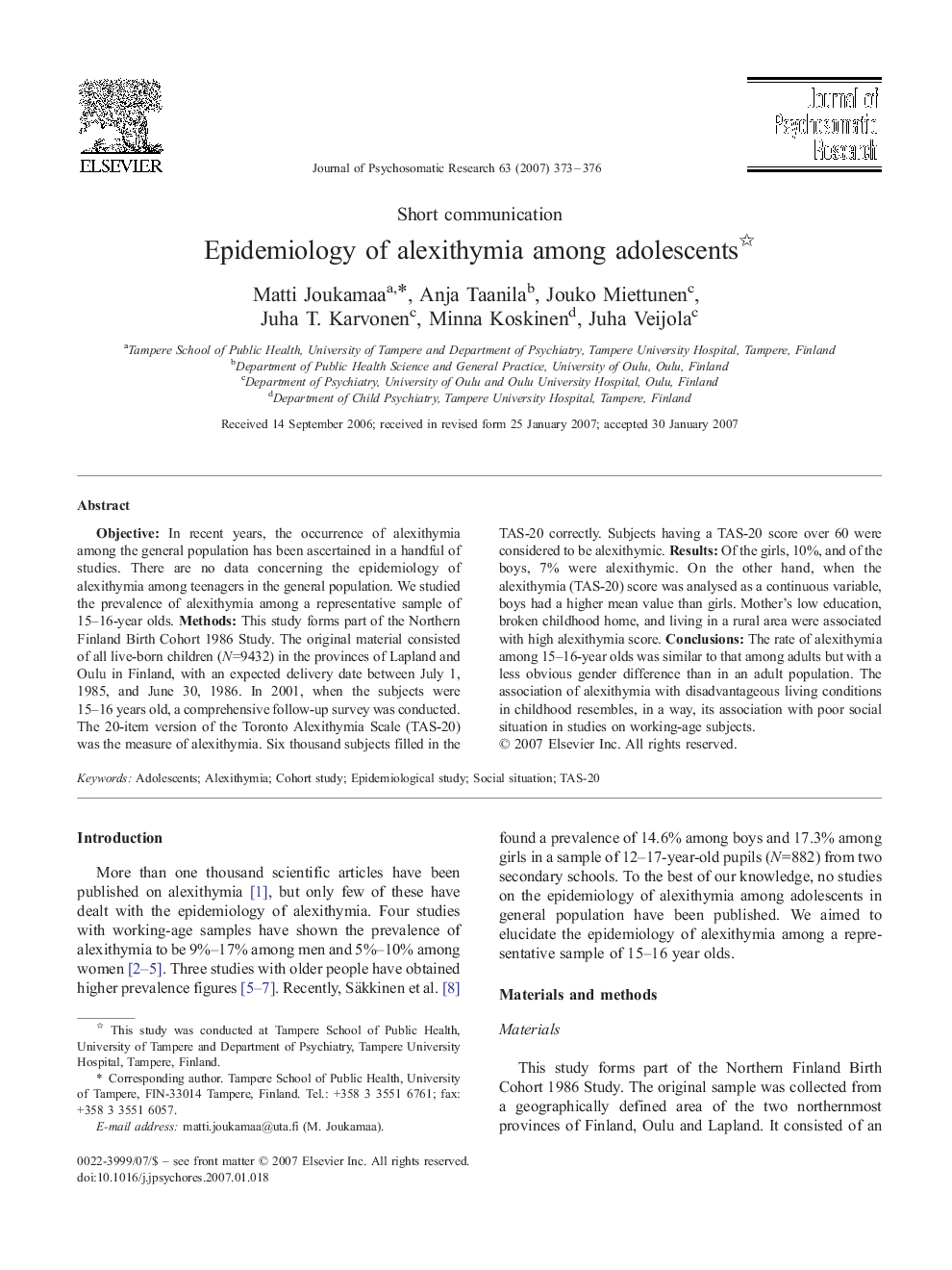| Article ID | Journal | Published Year | Pages | File Type |
|---|---|---|---|---|
| 951142 | Journal of Psychosomatic Research | 2007 | 4 Pages |
ObjectiveIn recent years, the occurrence of alexithymia among the general population has been ascertained in a handful of studies. There are no data concerning the epidemiology of alexithymia among teenagers in the general population. We studied the prevalence of alexithymia among a representative sample of 15–16-year olds.MethodsThis study forms part of the Northern Finland Birth Cohort 1986 Study. The original material consisted of all live-born children (N=9432) in the provinces of Lapland and Oulu in Finland, with an expected delivery date between July 1, 1985, and June 30, 1986. In 2001, when the subjects were 15–16 years old, a comprehensive follow-up survey was conducted. The 20-item version of the Toronto Alexithymia Scale (TAS-20) was the measure of alexithymia. Six thousand subjects filled in the TAS-20 correctly. Subjects having a TAS-20 score over 60 were considered to be alexithymic.ResultsOf the girls, 10%, and of the boys, 7% were alexithymic. On the other hand, when the alexithymia (TAS-20) score was analysed as a continuous variable, boys had a higher mean value than girls. Mother's low education, broken childhood home, and living in a rural area were associated with high alexithymia score.ConclusionsThe rate of alexithymia among 15–16-year olds was similar to that among adults but with a less obvious gender difference than in an adult population. The association of alexithymia with disadvantageous living conditions in childhood resembles, in a way, its association with poor social situation in studies on working-age subjects.
